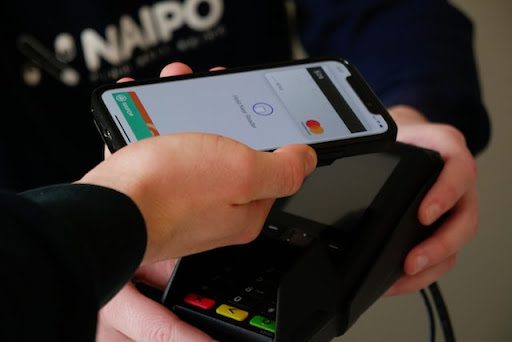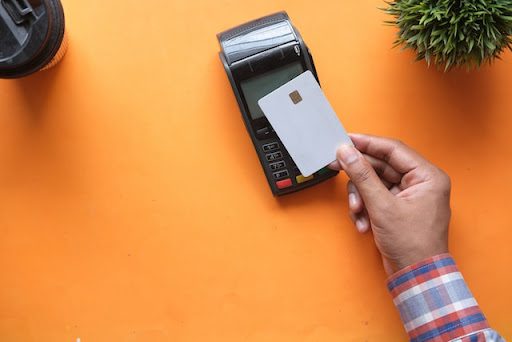In conditions when more than 50% of payment transactions in the world are carried out non-cash, participants in the payment market can only dream of peace. But there is no turning back: the world is going digital, payments are going online, and cash is literally flying into the fire. Therefore, today, cashless payments are becoming more and more relevant for business owners.
Digital payment techniques are no longer only convenient; they are now a must. Businesses have started employing touch-free payment technologies to limit the usage of cash and devices to slow the virus’s spread since the pandemic’s onset.
Now that the pandemic is gone, businesses realize the benefits of the contactless payment options they implemented to get through the tough times. The moment has come to convert to digital payment methods if you own a business and haven’t already.
Where did it come from?
What is contactless payment and why was contactless payment invented at all? To begin with, let’s figure it out. Contactless payment is a safe and convenient payment method for the client and a timely financial solution for businesses, namely, payment in which there is no contact between the card and the terminal. That is, you do not need to insert a card with a chip into the terminal or swipe a card with magnetic tape over the terminal.
First of all, such a payment method was invented for the payer’s convenience and to implement mobile payments. The high speed of data exchange between the card and the terminal via the radio interface, as well as the absence of the need to insert the card into the terminal reader, make it possible to implement the “tap & go” mode convenient for the cardholder. Also, payments below a certain limit do not require cardholder verification (for example, entering a PIN- code), which is also convenient and speeds up the operation.The limit on the number of purchases without verification of the cardholder (for example, entering a PIN) depends on the payment system’s rules on which the card was issued. And, perhaps, the most important thing: mobile payments cannot be implemented without contactless payments; after all, you cannot insert a phone into the terminal reader.
How does it work?
What happens between the card and the terminal for contactless payment? When we apply the card to the terminal at a distance of up to four centimeters, the card enters the alternating magnetic field of the terminal, and an induction current arises in it. By changing the strength of the magnetic field of the terminal, it is possible to transmit signals encoding commands sent to the card. Conversely, it is possible to change the field strength at the terminal using load modulation on the card side. In this way, responses to terminal commands are transmitted from the card.
Acquiring
Acquiring is a banking service that involves servicing buyers and clients of organizations using bank cards. Funds are debited from the card as payment for purchasing a product or service; for this, special equipment is used – a bank POS terminal.
Main types of acquiring
There are three main card acquiring solutions. Each of them has its own characteristics:
Merchant acquiring
It’s a service that an acquiring bank provides to a store or other commercial organization that works with customers and customers. It allows the merchant to accept cards to pay for goods and services. The bank installs POS-terminals in sales outlets through which customer service is carried out and also trains employees of the organization. The trading company pays for the bank’s services in the form of a commission, the amount determined by the contract.
Internet acquiring
It is one of the varieties of merchant acquiring. Its difference is that the seller and the buyer do not contact directly, purchases with a card are made via the Internet. As soon as the client buys goods in the online store, the seller is instructed to transfer money from the client’s account to the store’s account using the card details. A processing organization can participate as an intermediary in the transaction – it transfers information from the cardholder to the bank and prevents data theft.
Mobile acquiring
One of the new features was the acceptance of card payments using a mobile application and a special terminal. This is very convenient for couriers who deliver purchases directly to the client’s home. The mPOS terminal reads the card data and transfers it to the courier’s smartphone, where the transaction is carried out using a special application.
Acquiring in a smartphonе
Contactless payments are convenient for all parties – both for the cardholder and for sellers of goods and services, who can also accept payment from the client’s phone using their own smartphone as a terminal. One phone just needs to be attached to another. For example, now, there is no need to use additional equipment to accept contactless payments, just a regular Android smartphone or tablet with NFC. This is especially valuable for small and medium-sized businesses, which often have a traveling nature of work or a limited workplace in the area. And in any case, this solution is more economical than purchasing a separate terminal.

Connecting acquiring equipment is an important step forward for the development of any trading enterprise, and it is beneficial for businesses of any level. Acquiring offers a number of advantages:
– Significant increase in sales volume, increase in the average bill. Statistics have shown that people are more willing to spend money from a card than give cash since it is psychologically easier to part with electronic finance.
– Increasing the number of clients. If the store does not accept card payments, potential buyers refuse to purchase and go to competitors. Connecting terminals allow you to cover this part of the target audience.
– Increasing the security of payments. The risk of accepting counterfeit banknotes and any fraudulent actions by cashiers is excluded. In addition, the risk of errors due to the human factor is reduced.
– Access to preferential programs from the acquiring bank. The level of competition in this industry is also growing, so banks are forced to look for mutually beneficial ways to work with clients.



































